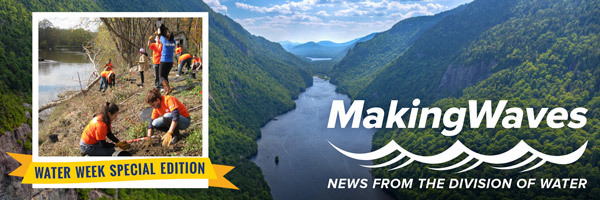MakingWaves - Water Week Special Edition
The New York State Department of Environmental Conservation sent this bulletin on 05/01/2017 12:51 PM EDT |
| DEC Delivers - Information to keep you connected and informed from the NYS Department of Environmental Conservation |
| Share or view as a web page || Update preferences or unsubscribe |
|
|
Theme for 2017: Nonpoint Sources of PollutionCelebrate Water Week by learning more about nonpoint sources of pollution and how you can help protect, restore and conserve water for the future! Today’s topic: It’s the 30th Anniversary! Did you know?
There are many possible sources
Test your water knowledgeWhat is the leading nonpoint pollution source causing water quality impairments in New York? (Answer is below) Learn moreOn DEC’s website, you can find information about:
Answer: Urban stormwater runoff. Other leading sources include aging wastewater infrastructure (spills become nonpoint sources of pollution), nutrient eutrophication, and legacy pollutants in sediments. |


